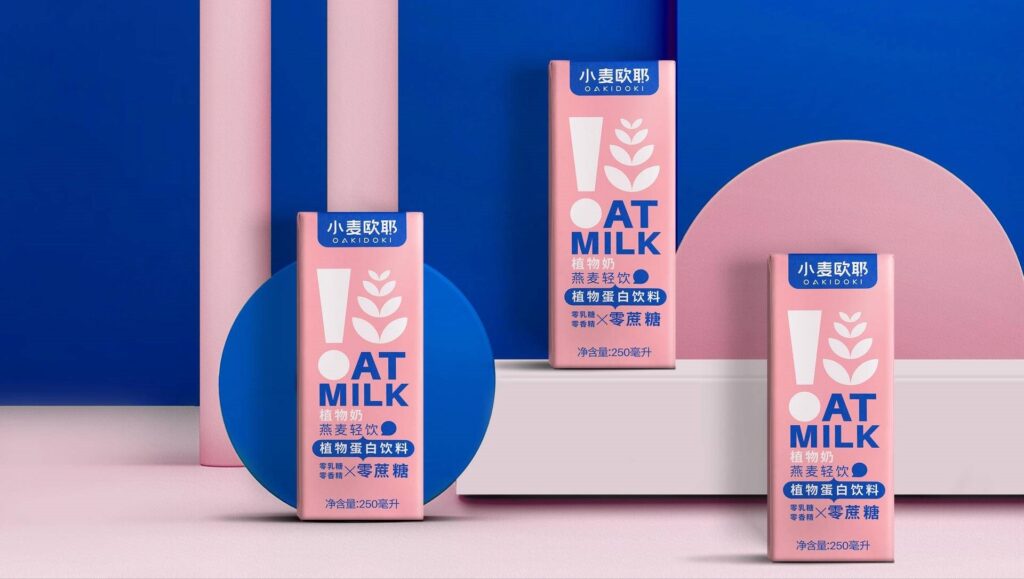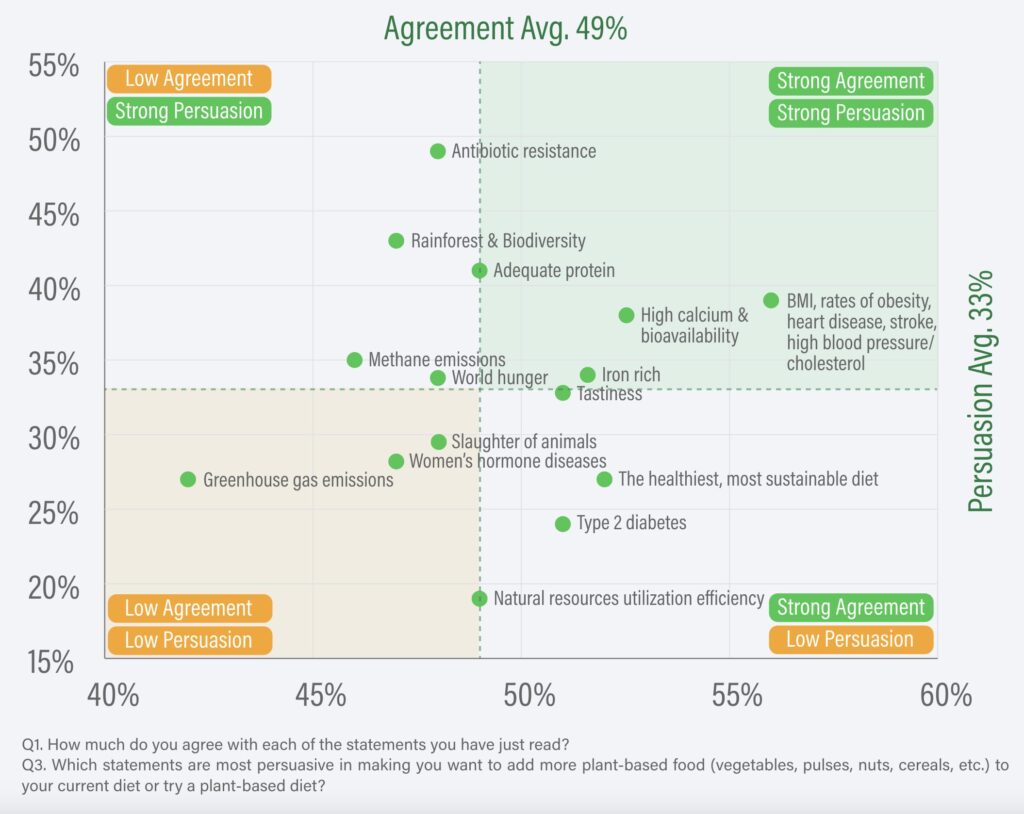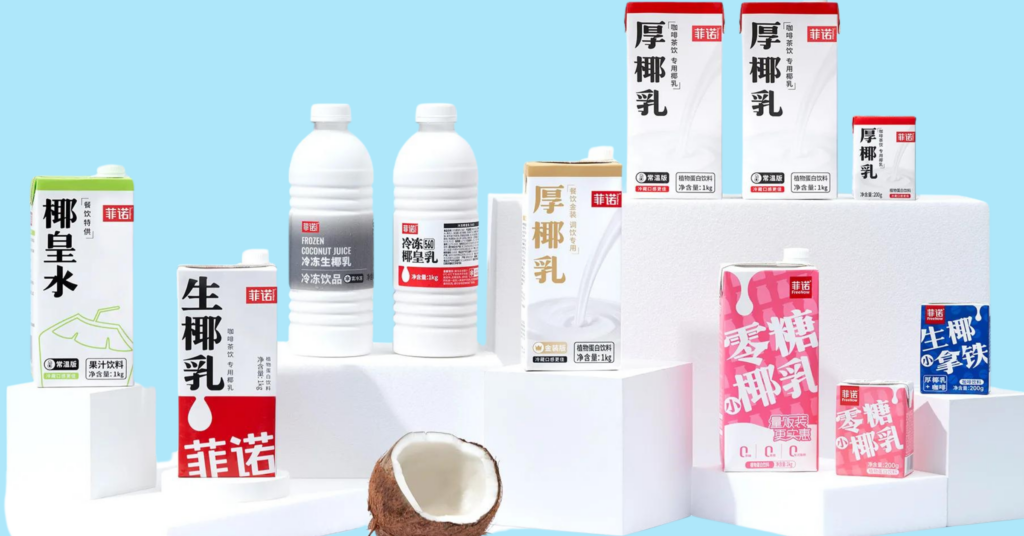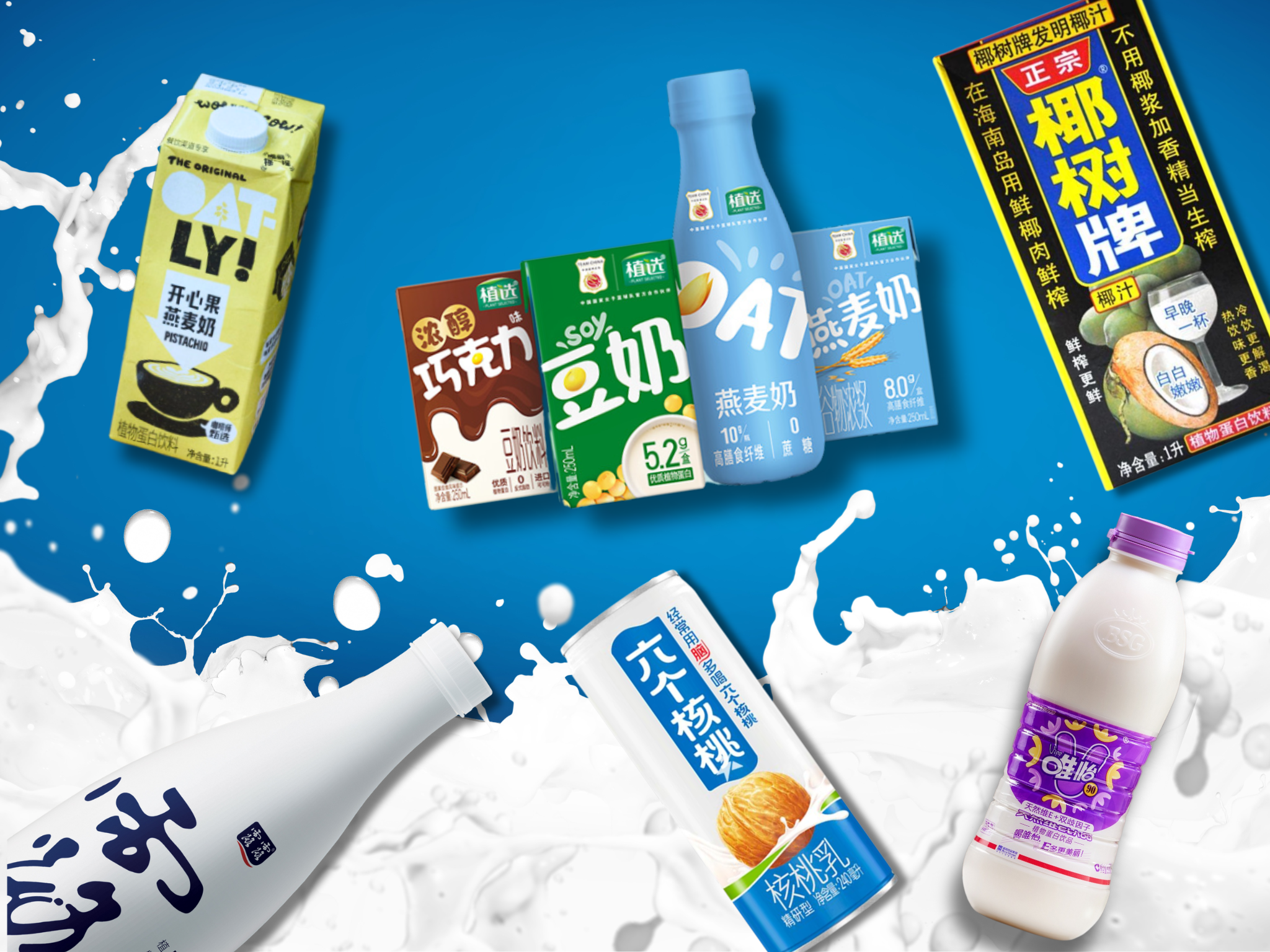The State of Play: Unlocking China’s Appetite for Plant-Based Milk
7 Mins Read
China is on course to becoming the world’s third-largest dairy producer – what does that mean for its plant-based industry?
People in China are eating more protein than Americans now, but a majority of this comes from plant-based foods. Despite that, the country – already the leading producer of pork, fish and eggs – is now the third-largest producer of milk.
The country is home to two of the top 10 dairy companies in the world, Yili and Manegniu, and has an industry worth CN¥680B ($95B). However, despite milk production rising by 36% since 2018 and surpassing the 2025 target three years ahead of time, per capita consumption of milk fell from 14.4kg in 2021 to 12.4kg in 2022.
The alternative dairy industry, meanwhile, is a burgeoning sector, with a host of brands vying for market share by putting taste and nutrition at the forefront. According to Chinese company database Qichacha, there are over 5,000 enterprises related to plant-based milk registered in China today (though some of these contain casein or milk powder, but are still classed as dairy alternatives).
These include traditional brands like Coconut Palm and Yangyuan, young startups like Oat Plant and Oakidoki, and global giants like Danone, Vitasoy and Oatly. It’s a market set to reach CN¥300B ($42B) next year.
“This undoubtedly attracts numerous new players, yet it remains to be seen how many of these 5,000 enterprises will successfully launch products,” says Wan Lin, marketing and research lead at Toronto-based Dao Foods International, a China-focused impact investor whose alt-dairy brands include Wow Foods, PlantNow!, and True Plant.
The rise of China’s plant-based milk sector

China’s annual per capita consumption of dairy (excluding butter) reached 34kg in 2021, compared to 231kg for the US. “This amount translates to approximately 90ml per day, which is less than one-third of the 300ml daily intake recommended by the Chinese Dietary Guidelines 2022,” explains Lin. “In contrast, the Dietary Guidelines for Americans (2020-2025) recommend a daily intake of 710ml.”
He adds: “Notably, most people in China’s rural areas, which make up 36% of the entire population, do not have a habit of drinking milk. Therefore, there is considerable potential for growth in China’s milk consumption.”
Further, in China, nutritional guidelines play an important role in helping influence consumer dietary habits – demand for dairy is set to increase by 2.4% every year until 2032, reaching 62.2 million tonnes of liquid milk equivalent. Concurrently, the country’s milk supply is also set to grow, having reached 41.5 million tonnes last year and already showing a 5% increase in the first quarter of this year.
The country also has a long-running National School Milk Programme to encourage children to consume more milk in schools. The programme has reached 27 million schoolgoers aged six to 15, and aims to expand to 35 million in the future.
But there’s also room for alt-dairy. “Capitalising on the global plant-based trend in 2020, plant-based milk sales on [online retailer] Tmall surged by 965%, accompanied by a 900% increase in the consumer base,” Lin reveals. “Since 2007, plant-based milk has been the fastest-growing segment in China. In 2021, the industry generated revenue of CN¥211.72B ($29.6B), with a compound annual growth rate of 34.5% from 2007 to 2021.”
However, sales appear to have suffered in the last couple of years, particularly for major international players like Oatly, whose struggles in China saw it withdraw low-margin SKUs and initiate a strategic reset, separating Greater China from Asia in its business operations.
One major reason was the popularity of local brands. “Typically, when choosing a dairy alternative, Chinese consumers tend to prefer more familiar domestic options such as soy milk or walnut milk,” says Lin/ In 2022, Yangyuan (walnut milk), Coconut Palm (coconut milk), Lolo (almond and apricot seed milks), Dali (soy milk), and Vitasoy (soy milk) represented the top five alt-milk brands in the country.
“The plant-based milk market in China, which has been established for two to three decades, is highly regionalised,” he explains. Western China is dominated by Viee (which makes nut, soy and oat milks), the eastern region by Yinlu (peanut milk mixed with milk), the south by Coconut Palm, and the north by Lolo.
“These brands have become synonymous with their categories and hold dominant positions in their respective markets. With the emergence of numerous new brands as mentioned earlier, international brands like Oatly entering the Chinese market face significant competition,” adds Lin.
Government support and the focus on nutrition

Despite falling population numbers, animal consumption is expected to increase by 2030 in China, according to a study from last year. If the country is to meet the 1.5°C Paris Agreement goal, 50% of all protein consumption would need to be from alternative sources by 2060.
Even so, the primary driver of vegan product consumption is wellness, rather than the environment. In June, a poll found that 46% of Chinese consumers are motivated by health reasons to eat more plant-based, followed by nutrition (39%).
But while plant-based meat is still much more of an emerging player in China, the established milk analogue market is taking note of these trends, highlighting attributes like ‘no sugar/cholesterol/trans fat’, ‘good for brains/eyes’, and ‘high protein/calcium’ on product packaging, alongside cleaner labels. Nestlé’s recently introduced oat milk latte, for example, boasts 7g of dietary fibre. Lin says the food as medicine movement is gaining traction in this segment too.
China’s government has been prioritising more nutritious food products as part of its Healthy China policy. In May, the theme of its 10th Nutrition Week was ‘Reduce Oil, Increase Beans, Add Milk’. Its dietary guidelines recommend consuming 15-25g of soybeans or equivalent soy products per day, but more than two-thirds of people don’t meet this intake.
A state-backed conference held by the Chinese Nutrition Society aimed to promote a broader understanding of soy milk nutrition through a report on soy milk and health. And in the National Nutrition Plan (2017-2030), the government emphasises “plant-based proteins as the primary nutritional base, enhances efforts to innovate in research and processing technologies, and promotes the adoption of plant-based products”.
“A significant portion of the population in China is lactose-intolerant, which also boosts the demand for dairy alternatives,” adds Lin, who points to social media as a key influence as well. “Ultimately, consumers prioritise taste and nutritional content when making their food choices.” Surpassing dairy on both these fronts is also key for repeat purchases.
At last year’s Asia-Pacific Agri-Food Innovation Summit in Singapore, HaoFoods founder Astrid Prajogo told Green Queen’s Sonalie Figueiras that Chinese consumers are increasingly interested in plant-based dairy drinks and yoghurts.
Soy milk dominates, but coconut explodes in popularity

“The range of ingredients in plant-based milk has become more diverse,” Lin says. “Recent additions to the market include rice milk, walnut yoghurt and water chestnut milk. Wow Foods… specialises in producing pea protein milk.”
But over the last year, coconut milk has emerged as a standout, largely because it’s versatile and pairs well with milk, tea, fruits, and more. “Brands like Coconut Palm (founded in 1998) have high national recognition, while newer brands like FreeNow and Coco100 have experienced rapid growth and increasing popularity. Additionally, specialised coconut beverage chain stores such as Cococean and Yee3 have become increasingly common,” explains Lin.
That said, soy milk – which has been consumed for over 2,000 years – is still the most recognised and dominant product in China’s plant-based milk market. It’s even more popular than cow’s milk when it comes to breakfast beverages, with 39% of people drinking soy milk with their morning meals, compared to 14% choosing conventional dairy.
“However, a significant portion of soy milk consumption in China is sourced from breakfast vendors or homemade using soy milk makers,” states Lin. “Currently, no single company holds an absolute leading position in this market. The ubiquity of soy milk has made it too commonplace to excite mainstream young consumers.”
In the wider market, too, product similarity is a major barrier, he says. “To overcome this, we need fresh and unique products that surpass cow’s milk in both nutrition and taste, providing consumers who typically drink cow’s milk with a compelling reason to try something new.”



